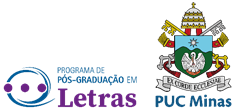Submissões
Condições para submissão
Como parte do processo de submissão, os autores são obrigados a verificar a conformidade da submissão em relação a todos os itens listados a seguir. As submissões que não estiverem de acordo com as normas serão devolvidas aos autores.- A contribuição é original e inédita, e não está sendo avaliada para publicação por outro periódico; caso contrário, deve ser justificado em "Comentários ao editor".
- O arquivo de submissão está no formato Microsoft Word, OpenOffice ou RTF. URLs para referências foram informados quando possível.
- O texto segue os padrões de estilo e os requisitos bibliográficos descritos em Diretrizes para autores, na página Sobre o Journal.
- Em caso de submissão a uma seção revisada por pares (por exemplo, artigos), as instruções disponíveis em Garantir a avaliação de pares cegos foram seguidas. Veja as diretrizes para autores.
- O arquivo submetido não possui identificação autoral de qualquer natureza. Em caso de dúvida, consulte aqui.
Declaração de Direito Autoral
The author detains permission for reproduction of unpublished material or with reserved copyright and assumes the responsibility to answer for the reproduction rights.
Política de Privacidade
Esta revista oferece acesso livre imediato ao seu conteúdo, seguindo o princípio de que disponibilizar gratuitamente o conhecimento científico ao público proporciona maior democratização mundial do conhecimento.







